2014
During 2014 the Association has supported four of the world’s leading scientists in the area of lysosomes and lysosome-related organelles and their defects. We brought them together (along with many of their peers and co-specialists) at a meeting to discuss their progress as well as any issues they have faced. As well as both Dr Ashok Vellodi from Great Ormond Street Hospital in London to travel to Jordan to speak at a patient meeting and attend a Gaucher clinic to meet doctors. We also supported Professor Timothy Cox from Addenbrooke’s in Cambridge to travel to Skopje in Macedonia to attend the Macedonia Academy of Sciences and Arts (MASA) Conference on Rare Diseases on 15th November 2014.
Their reports follow:
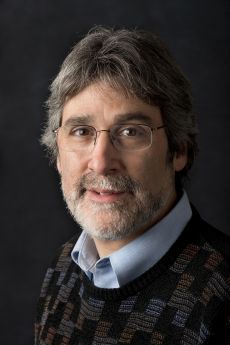 Michael Marks PhD writes: This conference – the third on this topic, the first in 10 years and the first with open registration – brought together scientists focused on the biology of lysosomes and related tissue-specific organelles, and on diseases that impact their formation and function. The conference consisted of oral presentations by leading scientists in the field as well as poster and short oral presentations by junior scientists.
Michael Marks PhD writes: This conference – the third on this topic, the first in 10 years and the first with open registration – brought together scientists focused on the biology of lysosomes and related tissue-specific organelles, and on diseases that impact their formation and function. The conference consisted of oral presentations by leading scientists in the field as well as poster and short oral presentations by junior scientists.
The topics ranged from analyses of conventional lysosomal storage diseases and less conventional disorders of organelle biogenesis; basic studies of lysosome and lysosome-related organelle biogenesis and secretion in model organisms and humans; new models of lysosomal diseases based on analyses of gene targeted mice and new concepts of the impact of lysosome function on neurodegenerative and metabolic disorders.
The grouping of scientists with backgrounds in diverse areas such as basic cell biology, pigmentation, hematology, neurodegeneration, cardiology, lung biology and others provided a backdrop for a productive and stimulating exchange of information. This exchange will be sure to infuse new areas of investigation into the etiology of the numerous symptoms of lysosomal storage diseases and other disorders of lysosomes and lysosome-related organelles.
Many other new ideas were raised at the conference about lysosome function, the machinery that regulates lysosome and lysosome-related organelle formation, their links to the endosomal and secretory systems and new links to rare diseases. I look forward to incorporating what I heard into my own research, and suspect that other attendees will as well.
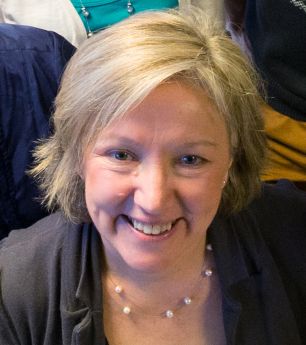 Professor Gillian Griffiths writes: My research laboratory at the Cambridge Institute for Medical Research is interested in understanding the biogenesis and function of rather unusual lysosomes that are found in immune cells.
Professor Gillian Griffiths writes: My research laboratory at the Cambridge Institute for Medical Research is interested in understanding the biogenesis and function of rather unusual lysosomes that are found in immune cells.
In most cell types lysosomes are the compartments (organelles) where proteins and lipids are sent for degradation. They form a very efficient ‘recycling centre’ within cells, breaking down unwanted products to their original components that can be reused. Many immune cells have modified their lysosomes so that they not only function within the cell, but can also undergo secretion, delivering their contents out of the cell. These ‘secretory lysosomes’ or ‘lysosome related organelles’ provide an important defense mechanism against pathogens.
My laboratory aims to understand the molecular mechanisms that control the formation and release of the secretory lysosomes found in killer ‘T’ cells of the immune system. These cells are very important as they are able to recognise and destroy virally-infected and tumor cells, so understanding the mechanism that allows them to do so is important to our ability to modulate these cells in health and disease.
Over the last 10 years there has been a great deal of research carried out on ‘lysosome related organelles’ in many different cell types. The meeting in Nerja, Spain was unique in bringing together the researchers, allowing them to exchange findings and set up new collaborations. It was a critical meeting for furthering research in this area and my laboratory is enormously grateful for the support of the Gauchers Association in supporting this meeting.
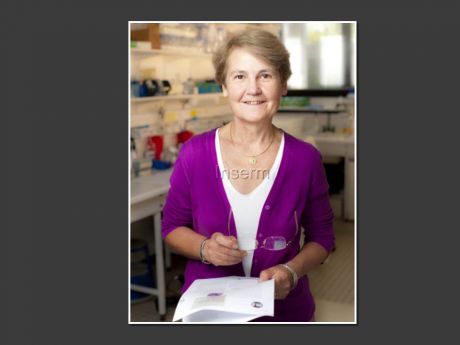 Genevieve de-Saint-Basile writes: The Zing conference that I was able to attend, thanks to the support from the Susan Lewis Memorial Fund, was held in Nerja, Spain in February 2014. This was a unique occasion that brought together internationally recognized experts, all working in the area of lysosome and lysosome-related disorders.
Genevieve de-Saint-Basile writes: The Zing conference that I was able to attend, thanks to the support from the Susan Lewis Memorial Fund, was held in Nerja, Spain in February 2014. This was a unique occasion that brought together internationally recognized experts, all working in the area of lysosome and lysosome-related disorders.
Over the course of three days, 47 speakers from around the world discussed their most recent data regarding the biological mechanisms involved in lysosome formation and function. The presentations and ensuing discussion provided up-to-date information on the fundamental processes as well as disease mechanisms involved in lysosome-related disorders. Importantly, we all gained an improved understanding and increased awareness of potential future possibilities for the treatment of lysosomal storage diseases.
Among the most exciting data for me was the interface between basic scientists and physician-scientists that this meeting provided. It helped to push us towards a new ways of looking at and better approaches towards the underlying mechanisms that lead to lysosome-related disorders. I believe that this meeting will guide further research into these problems, should improve diagnostic criteria and help designate new targeted treatments.
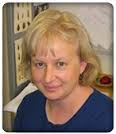 Professor Francis Platt writes: I would like to thank the Gauchers Association for their generosity in funding my travel so that I could speak at the Lysosome Related Organelle Conference in Spain in February 2014. I gave a talk on lysosome-related organelle defects in Niemann-Pick type C (NPC) disease and their clinical implications.
Professor Francis Platt writes: I would like to thank the Gauchers Association for their generosity in funding my travel so that I could speak at the Lysosome Related Organelle Conference in Spain in February 2014. I gave a talk on lysosome-related organelle defects in Niemann-Pick type C (NPC) disease and their clinical implications.
The meeting was excellent and was a wonderful way of learning more about lysosome-related organelles (LROs). LROs are not the main focus of my laboratory’s research and so I learnt a great deal at this meeting.
Many of the experts in this area were attending and discussed our research findings after my presentation. The meeting has directly led to a new collaborative project and has given me lots of new ideas about how to identify and understand lysosome-related organelle defects, particularly in NPC disease. I also met up with many existing colleagues and collaborators who were also attending the meeting. It was a great setting to have time to discuss our join research projects on lysosomal diseases including Gaucher in a relaxed, informal setting.
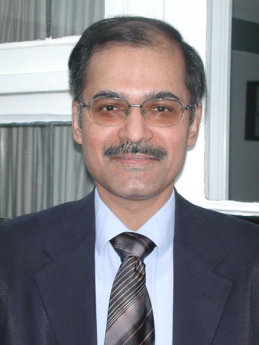 Dr Vellodi reports - In June (supported by the Susan Lewis Memorial Fund) I went to Jordan to attend a clinic with Dr Mohammed Antaki of the Jordanian Gaucher Society.
Dr Vellodi reports - In June (supported by the Susan Lewis Memorial Fund) I went to Jordan to attend a clinic with Dr Mohammed Antaki of the Jordanian Gaucher Society.
In the clinic I saw three adults and eight children patients. Two of the adults were sisters, one of whom had two affected children. They and the third adult had Type I, the rest had Type III, and only three were on treatment.
There is free healthcare in Jordan but for various reasons most people attend private clinics.
There are a total of 34 patients in Jordan, with 14 on ERT and all but one (funded by the King) has treatment provided through Genzyme’s International Cerezyme Access Programme (ICAP).
There is little awareness of Gaucher Disease in Jordan. There are no Gaucher specialists, and specialists such as orthopaedic surgeons know very little about the condition, so raising awareness is urgent, as is establishing at least one Gaucher centre. Patients have to go overseas to see a specialist and while some go to Israel, it’s hard to get a visa since many Jordanians are of Palestinian origin.
Most patients who attended the clinic had Type III, but no genotyping data was available for any patient.
Applications for humanitarian programmes are complex and prohibitively expensive, and forms have to be completed by Jordanian doctors who charge high fees. Outpatient appointments are Jordanian Dinar (JOD) 20 (£17.50) and filling in applications costs JOD100 (£87) and according to Genzyme, the quality of the applications is poor. Fresh applications often have to be made incurring further fees and some doctors have even refused to complete them. Additionally further approvals are required from the Health Minister and the King before an application for compassionate treatment can be submitted.
A central advisory committee has now been created by the government to decide on the criteria by which patients are prioritised. An agreement reached with Genzyme meant that the government will pay for five patients which Genzyme will provide treatment for five more patients on compassionate grounds match.
Some parents were interested and engaged, but there is reluctance to form a support group. There are a number of reasons why this might be but we need to work hard to further awareness and to increase the availability of medication and access to specialists.
The European Gaucher Alliance (EGA) will work with Dr Mohammed Antaki of the Jordanian Gaucher Society over the coming year to support the patients and families in Jordan.
The 3rd Rare Disease South Eastern European Meeting
Organized by the Macedonian Academy for Science and Art was held on 15th of November 2014 in Skopje, Macedonia. This meeting is dedicated to bringing the news from the academic community in EU to Macedonia.
The Association of citizens for rare diseases Life With Challenges is supporting this congress as the cooperation between the patient and the academic community is very important for progress in providing better quality of life for patients with rare diseases. We see such meetings as a chance to network and strengthen cooperation with academic community, medical professionals, industry, patients and government institutions.
In the area of Gaucher Disease there were 2 lectures, one commercial - on the subject of Eliglustat from Genzyme, and one on management of Gaucher Disease from Prof. Timothy Cox. As patient organization we appreciated the opportunity to have such a distinguished guest as Prof. Cox, as we are aware of the need to raise awareness on disease management, especially for a rare disease such as Gaucher, from which 10 patients in Macedonia are affected.
Life With Challenges used this opportunity to have a Gaucher family dinner, and all of us together (families, doctors, pharmaceutical representatives, academics) had a nice evening with the amazing Prof. Cox who talked to everybody and tried to answer all the questions we had.
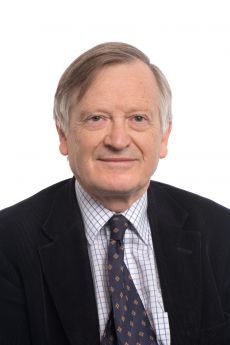 Professor Timothy Cox writes - Simply it was an inspiration to see what Ms Vesna Aleksovska and just a few local colleagues have achieved already in The Republic of Macedonia - not only for patients with Gaucher disease (which is special to Vesna’s heart) but applying this experience for the benefit of patients with other rare conditions in need. It is not always easy to live in this part of the Balkans.
Professor Timothy Cox writes - Simply it was an inspiration to see what Ms Vesna Aleksovska and just a few local colleagues have achieved already in The Republic of Macedonia - not only for patients with Gaucher disease (which is special to Vesna’s heart) but applying this experience for the benefit of patients with other rare conditions in need. It is not always easy to live in this part of the Balkans.
By sheer persistence, and much strategic planning within the rare disease initiatives of the EU, Vesna and her colleagues have created links at the highest political level to promote equitable access to treatment and proper care.
Vesna, a key member of the EGA, had the foresight to ensure the engagement of local physicians in the best standards of international practice; this is not at all easy when the health care is not an obvious source of personal advantage for cash-strapped doctors with other diverting priorities.
That all ten known patients with Gaucher disease in Macedonia are able to flourish with sustained delivery of enzyme therapy, is little short of a miracle. They and their families were very interesting to meet over dinner; all appeared to be in such good health – Vesna herself now expecting her first baby!
We should not forget that this happy outcome is a tribute to many people working within, and alongside the Genzyme company in the former Soviet States. Over more than a decade, the Emergency Cerezyme Access Programme set up by Henri Temeer (in response to a fierce challenge led by the late Susan Lewis with the EGA) is a tribute to just what can be achieved through genuine partnership between companies and the communities of patients they serve.
I thank the Association, and in particular, the Susan Lewis Memorial Fund, for supporting this visit. The Republic of Macedonia is a small and diverse country, but even this short visit provided a big education. It left a lasting impression of the power of humanity and of those who never give up – but also, just what selfless work it takes to achieve anything worthwhile for those in need.
